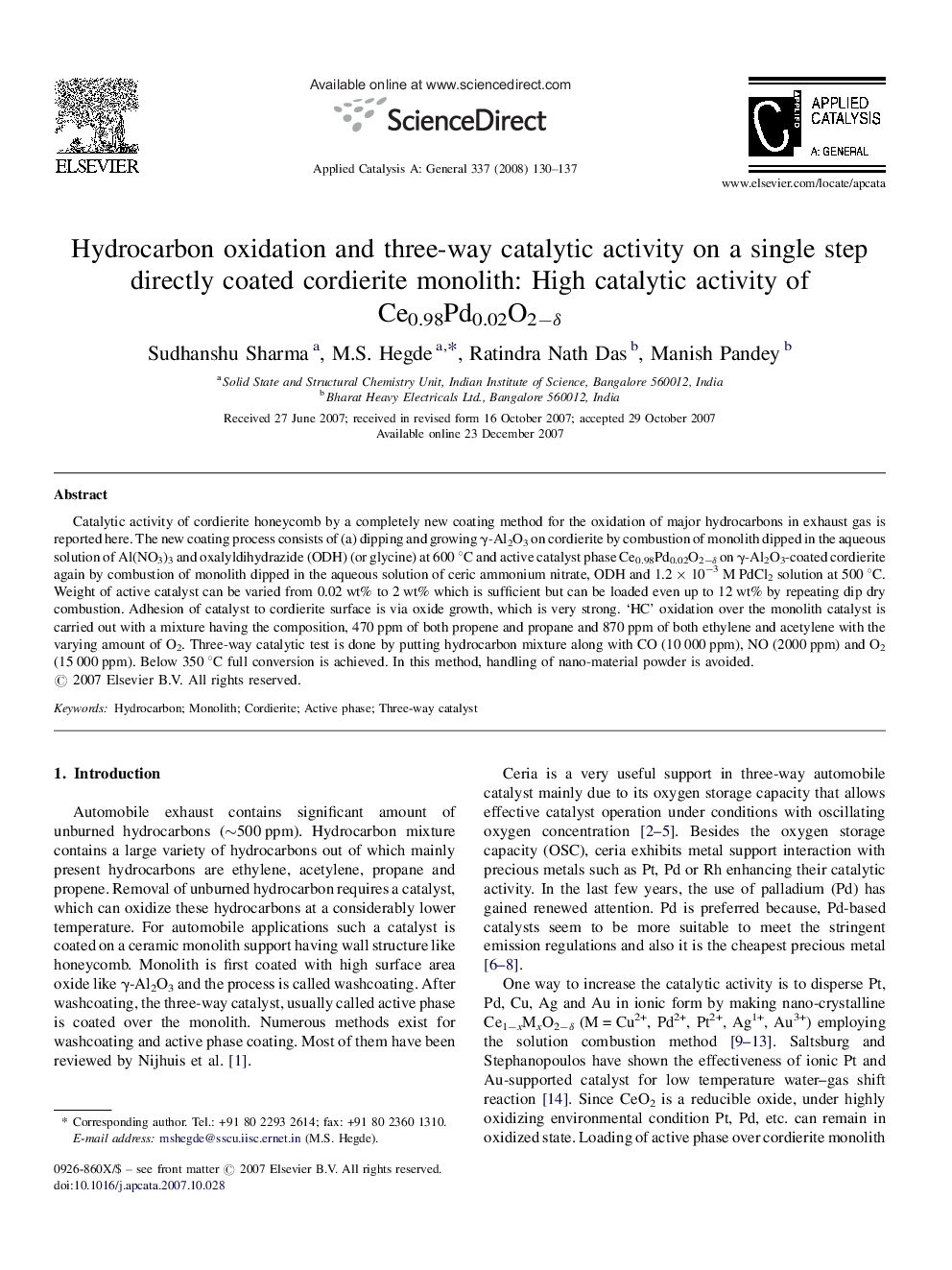| Article ID | Journal | Published Year | Pages | File Type |
|---|---|---|---|---|
| 43512 | Applied Catalysis A: General | 2008 | 8 Pages |
Catalytic activity of cordierite honeycomb by a completely new coating method for the oxidation of major hydrocarbons in exhaust gas is reported here. The new coating process consists of (a) dipping and growing γ-Al2O3 on cordierite by combustion of monolith dipped in the aqueous solution of Al(NO3)3 and oxalyldihydrazide (ODH) (or glycine) at 600 °C and active catalyst phase Ce0.98Pd0.02O2−δ on γ-Al2O3-coated cordierite again by combustion of monolith dipped in the aqueous solution of ceric ammonium nitrate, ODH and 1.2 × 10−3 M PdCl2 solution at 500 °C. Weight of active catalyst can be varied from 0.02 wt% to 2 wt% which is sufficient but can be loaded even up to 12 wt% by repeating dip dry combustion. Adhesion of catalyst to cordierite surface is via oxide growth, which is very strong. ‘HC’ oxidation over the monolith catalyst is carried out with a mixture having the composition, 470 ppm of both propene and propane and 870 ppm of both ethylene and acetylene with the varying amount of O2. Three-way catalytic test is done by putting hydrocarbon mixture along with CO (10 000 ppm), NO (2000 ppm) and O2 (15 000 ppm). Below 350 °C full conversion is achieved. In this method, handling of nano-material powder is avoided.
Graphical abstractBy a unique solution combustion method, washcoat and active catalyst phase has been directly grown on cordierite surface. Oxidation of major hydrocarbons, two-way and three-way catalytic performances with Ce0.98Pd0.02O2−δ-coated cordierite monolith are very good. We find that below 350 °C all the pollutants can be converted fully.Figure optionsDownload full-size imageDownload as PowerPoint slide
